Manufacturing a surgical device, especially in the field of orthopedics, requires a deep understanding of both the medical and manufacturing industries. As a contract-manufacturer, the goal is not just to produce a device but to ensure it meets the print’s specifications as well as the highest standards of safety, efficacy, and reliability.
Understanding the Device and Its Application

Machinists on the floor programming CNC equipment
The first step in manufacturing a surgical device is to understand its purpose, application and, and the environment in which it will be used. This involves working closely with clients to grasp the device's specifications, the surgical procedure it will be used in, and the outcomes it aims to achieve.
Effective manufacturing of surgical devices requires close collaboration between the contract-manufacturer and the client. It all begins with effective DFM (Design for Manufacturability).Regular communication ensures that any design changes, challenges, or regulatory concerns are promptly addressed. It also allows for continuous improvement of the manufacturing process based on feedback from the client and end-users. Building a strong partnership can lead to better outcomes, innovation, and growth for both parties.
Biocompatibility and Compliance with Industry Quality & Regulatory Standards
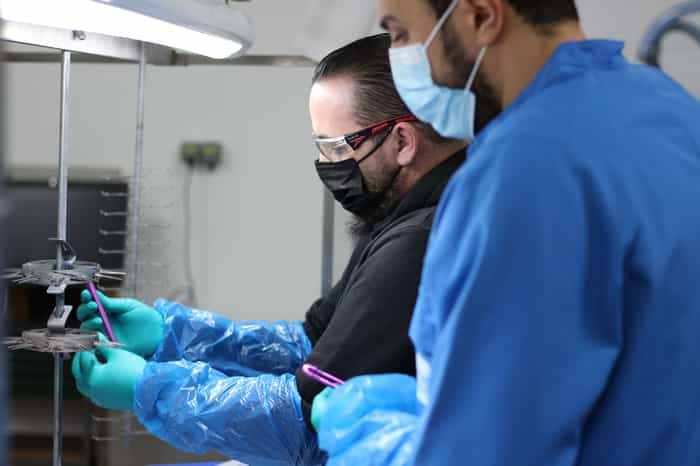
Operators inspecting implants after Titanium III anodizing
The choice of materials is a critical factor in the manufacture of orthopedic devices. Materials must be biocompatible, durable, and capable of withstanding the mechanical stresses encountered during and after surgery. Common materials include stainless steel, titanium, and various polymers and ceramics, each selected based on the specific application and required properties of the final device. Additionally, manufacturing a surgical device demands strict adherence to Quality and Regulatory standards.
This includes maintaining a robust Quality Management System, such as ISO 13485, to oversee the entire manufacturing process, from design to delivery as well as compliance with the Food and Drug Administration (FDA) in the United States, the European Union's Medical Device Regulation (EU-MDR), and other relevant international standards. The materials chosen must comply with regulatory standards for biocompatibility and toxicity.
Precision Machining and Advanced Manufacturing Techniques
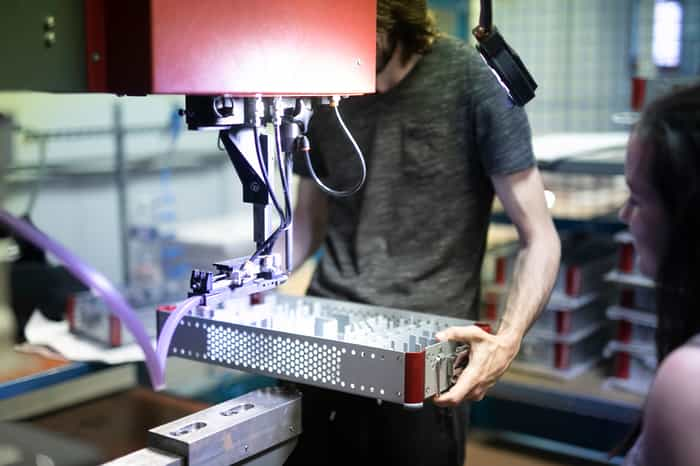
Operator riveting brackets inside a sterilization container
Leveraging advanced manufacturing techniques can significantly improve the quality and efficiency of producing surgical devices. A device may lend itself for “traditional” machining capabilities (ie. CNC milling, turning, swissturning, laser cutting etc.) but not all production cells are built the same. Indeed, advanced 5- or more axis manufacturing will facilitate the production of complex geometries, eliminating the need for multiple setups and reducing the cost of products. Plus, with the advancement of robotics and automation, a production cell can run with little to no oversight, geared to support new product launches at scale.
For orthopedic devices that require customization to fit individual patient anatomy, Additive manufacturing may lend itself more beneficial.
Navigating Supply Chain Complexities
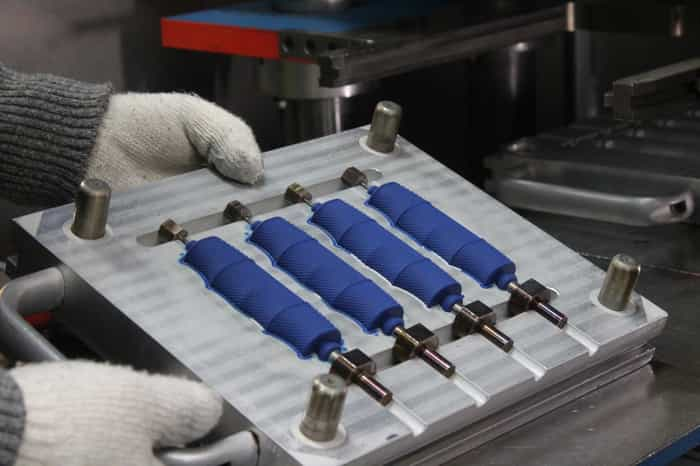
Silicone overmolded handles off the press
The supply chain for manufacturing surgical devices, particularly in orthopedics, encompasses a wide array of processes, each with its own set of challenges. From the precision machining of metal components to the silicone overmolding of handles and the specialized coating of device parts, managing these diverse processes requires meticulous coordination. The machining of components demands precision engineering and the use of advanced technologies to ensure parts meet exact specifications. Silicone overmolding, used to enhance the grip and ergonomics of surgical tools, involves a delicate process of integrating soft and hard materials without compromising the device's integrity or functionality. Furthermore, coating components with materials that enhance durability, reduce wear, and increase biocompatibility adds another layer of complexity. This process often requires specialized knowledge and equipment, as well as strict adherence to regulatory standards for medical-grade coatings.
Each step in the supply chain, from sourcing raw materials to the final assembly and packaging of the devices, must be carefully managed to maintain quality and meet delivery timelines. This involves selecting one or several reliable partners, establishing quality control checkpoints, and coordinating logistics to ensure that components arrive on time and meet the required standards. The complexity of managing these varied and specialized processes underscores the importance of robust supply chain management practices in the manufacturing of surgical devices. With time-to-market in mind, effective supply chain management not only ensures the timely production of high-quality devices but also contributes to the overall efficiency and cost-effectiveness of the manufacturing process.
Traceability and Quality Assurance
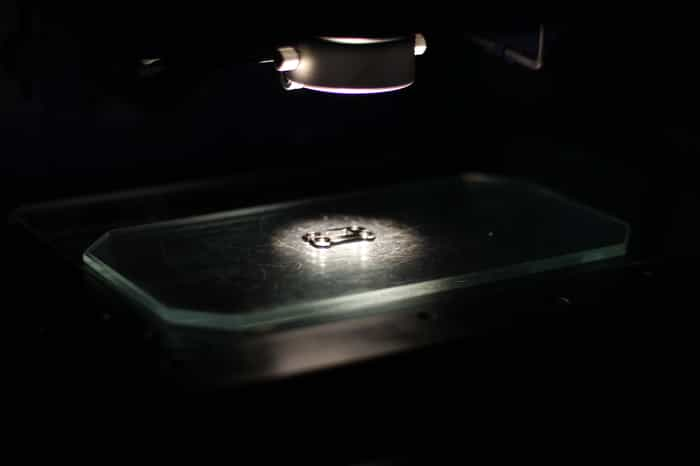
Product Excellence: Final inspection of a cervical plate
Throughout the manufacturing process, rigorous testing and quality assurance are key. This includes both in-process inspections and final control of the finished product.
Medical Device manufacturing requires the implementation of a robust traceability system to track the device from raw materials through to the end-user can help in monitoring quality and facilitating any necessary recalls. Mechanical testing, biocompatibility testing, and sterilization validation are all critical to ensure the device meets all specifications and regulatory requirements.
Conclusion
In conclusion, the manufacture of orthopedic surgical devices demands a nuanced understanding of the device's application, adherence to regulatory standards, and a mastery over the complex supply chain from component machining to final assembly. Contract-manufacturers must embrace advanced manufacturing techniques, rigorous quality assurance, and maintain a close collaborative relationship with their clients. By addressing these challenges head-on, manufacturers can ensure the delivery of safe, effective, and high-quality devices to the medical field, ultimately supporting the advancement of orthopedic care.
Interested in working with us?

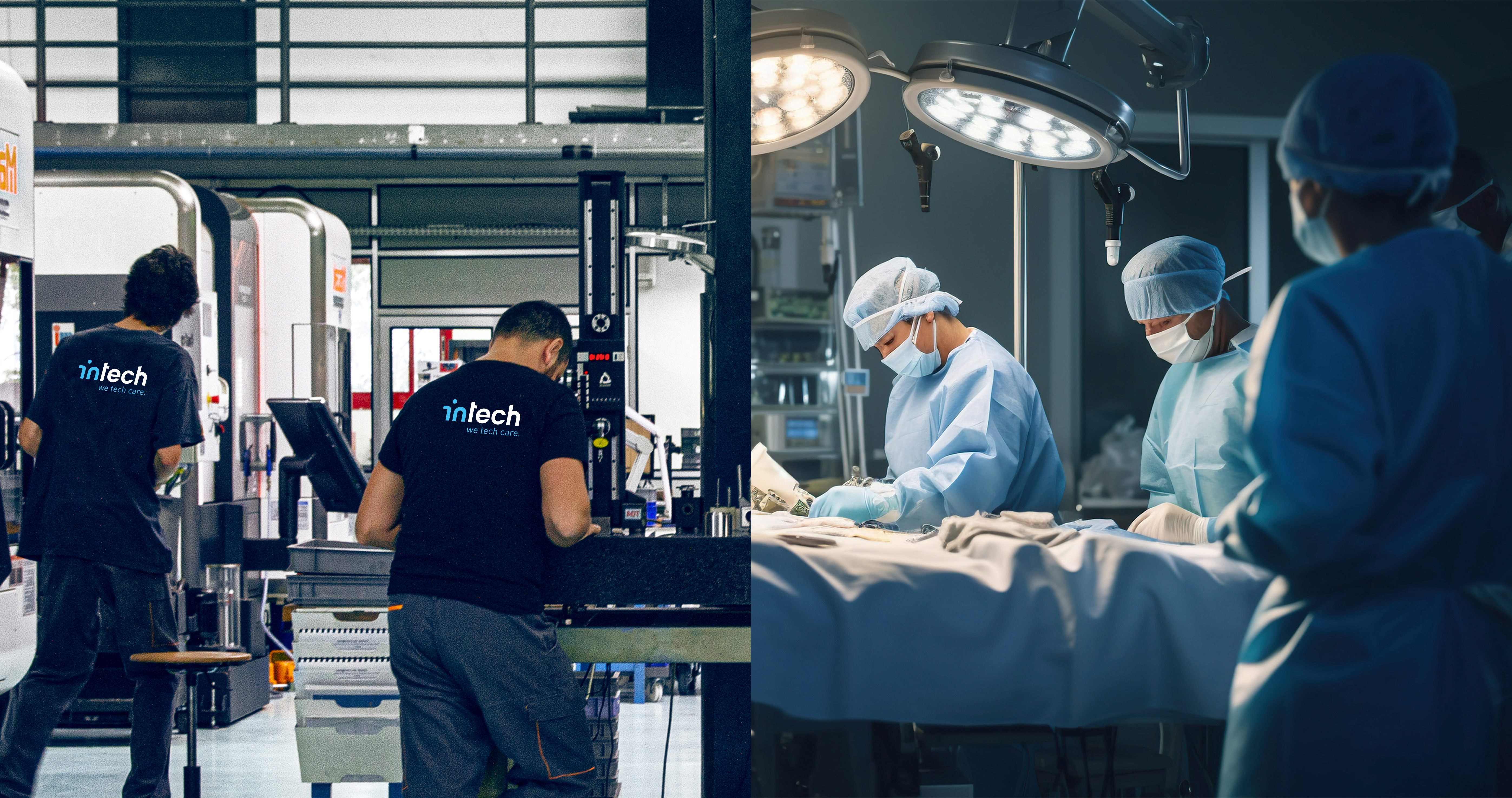


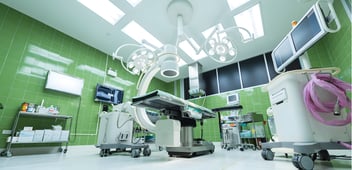

Leave a Comment